Smith, Oliver Prince, born 26-10-1893, in Menard, Menard County,  Texas, United States to John Alexander Smith (1853–1899)
Texas, United States to John Alexander Smith (1853–1899)  and his wife Anna Marie, born Oberwetter Smith (1861–1935). Oliver had one brother and one sister, Alexander Oberwetter “Alex” Smith (1891–1963) and Marguerite Marie Smith (1895–1944).
and his wife Anna Marie, born Oberwetter Smith (1861–1935). Oliver had one brother and one sister, Alexander Oberwetter “Alex” Smith (1891–1963) and Marguerite Marie Smith (1895–1944). 
 Oliver in 1918 married with Esther Laurilla, born King, Smith (1894–1964) and the couple had one daughter Virginia King Smith McHenry (1921–2001)
Oliver in 1918 married with Esther Laurilla, born King, Smith (1894–1964) and the couple had one daughter Virginia King Smith McHenry (1921–2001) 
His father John died when he was seven, and his mother moved to Northern California. John graduated from Santa Cruz High School in 1911.  He attended the University of California, Berkeley, working his way through college doing odd jobs (mostly gardening). After graduation, he reported for active duty as a second lieutenant in the Marine Corps
He attended the University of California, Berkeley, working his way through college doing odd jobs (mostly gardening). After graduation, he reported for active duty as a second lieutenant in the Marine Corps  in 1917. Smith was a quiet, shy Christian Scientist.
in 1917. Smith was a quiet, shy Christian Scientist.
The following month he was assigned his first overseas tour at Guam, Marianas Islands, where he served with the Marine Barracks, Naval Station. While in Guam, (then) Lieutenant Smith was married to Esther Laurilla King of Hayward, California. They remained married for 58 years. In May 1919, he returned to the United States for duty with the Marine barracks at Mare Island, California.
Ordered to sea duty in October 1921, Lieutenant Smith served as commanding officer of the Marine Detachment aboard the USS Texas 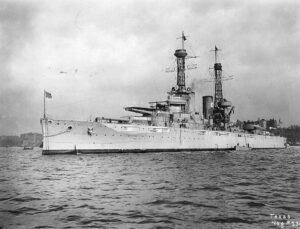 until May 1924. At that time he was assigned to Marine Corps Headquarters, Washington, D.C., for duty with the personnel section.
until May 1924. At that time he was assigned to Marine Corps Headquarters, Washington, D.C., for duty with the personnel section.
Returning overseas in June 1928, he joined the Gendarmerie of Haiti, Port-au-Prince, as assistant chief of staff. Following his return from foreign shore duty in June 1931, he became a student at the Field Officer’s Course, U.S. Army Infantry School, Fort Benning, Georgia. ![]() Graduating in June 1932, he was ordered to duty at the Marine Corps Schools, Quantico, Virginia, as an instructor in the Company Officers’ Course. In September 1933, he was named assistant operations officer of the 7th Marine Regiment
Graduating in June 1932, he was ordered to duty at the Marine Corps Schools, Quantico, Virginia, as an instructor in the Company Officers’ Course. In September 1933, he was named assistant operations officer of the 7th Marine Regiment 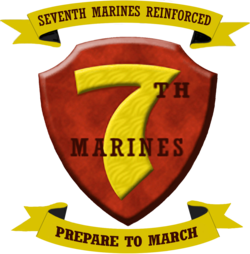 at Quantico.
at Quantico.
Smith sailed for France in January 1934, where he joined the staff of the American Embassy in Paris for duty with the Office of the U.S. Naval Attaché. From November 1934 to July 1936, while in Paris, he became the first Marine Corps officer to matriculate at the Ecole Supérieure de Guerre. 
He returned to the United States in August 1936, and joined the staff of the Marine Corps Schools at Quantico, as an instructor in the S-3 Section, (Operations and Training). He acquired the nickname “the professor,” gained a reputation as an intellectual during these years and was recognized as an expert on amphibious warfare.
Smith was transferred to the West Coast in July 1939, where he joined the Fleet Marine Force as operations officer at the Marine Corps Base, San Diego, California.
In June of the following year, he became commanding officer of the 1st Battalion, 6th Marines, and in May 1941, sailed with the 6th Marine Regiment  for Iceland where he remained until returning to the United States in March 1942.
for Iceland where he remained until returning to the United States in March 1942.
In May 1942, Smith was ordered to Headquarters Marine Corps, Washington, D.C., where he became executive officer of the Division of Plans and Policies. He remained in this capacity until January 1944, when he joined the 1st Marine Division  on New Britain. There he took command of the 5th Marine Regiment,
on New Britain. There he took command of the 5th Marine Regiment,  and subsequently led the regiment in the Talasea phase of the Cape Gloucester operation. The Battle of Cape Gloucester was fought in the Pacific theater of World War II between Japanese and Allied forces on the island of New Britain, Territory of New Guinea, between 26-12-1943 and 16-01-1944. Codenamed Operation Backhander.
and subsequently led the regiment in the Talasea phase of the Cape Gloucester operation. The Battle of Cape Gloucester was fought in the Pacific theater of World War II between Japanese and Allied forces on the island of New Britain, Territory of New Guinea, between 26-12-1943 and 16-01-1944. Codenamed Operation Backhander.
In April 1944, he was named assistant division commander of the 1st Marine Division and participated in operations against the Japanese in the Peleliu operation during September and October 1944. The Battle of Peleliu, codenamed Operation Stalemate II by the US military, was fought between the United States and Japan during the Mariana and Palau Islands campaign of World War II, from 15-09-to 27-11-1944, on the island of Peleliu. 
Smith became Marine deputy chief of staff of the Tenth Army 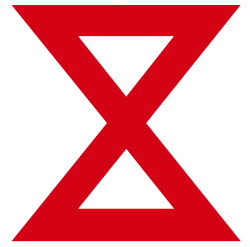 under command of General Stilwell, Joseph Warren “Vinegar Joe” in November 1944, and participated in the Battle of Okinawa from April through June 1945. Stilwell died of stomach cancer on 12-10-1946, age 63, at the Presidio of San Francisco, while still on active duty. His ashes were scattered on the Pacific Ocean and a cenotaph was placed at the West Point Cemetery.
under command of General Stilwell, Joseph Warren “Vinegar Joe” in November 1944, and participated in the Battle of Okinawa from April through June 1945. Stilwell died of stomach cancer on 12-10-1946, age 63, at the Presidio of San Francisco, while still on active duty. His ashes were scattered on the Pacific Ocean and a cenotaph was placed at the West Point Cemetery.

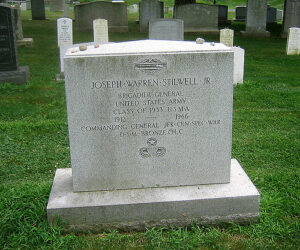
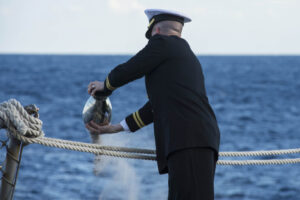
In July 1945, Smith returned to the United States and became commandant of the Marine Corps Schools, Quantico,  and in January 1948, was named commanding general, Marine Barracks, Quantico, in addition to his duties at the school. Three months later, he became assistant commandant of the Marine Corps and chief of staff, Headquarters Marine Corps, Washington, D.C. While there he served as editor-in-chief of the professional journal of U.S. Marines, the Marine Corps Gazette.
and in January 1948, was named commanding general, Marine Barracks, Quantico, in addition to his duties at the school. Three months later, he became assistant commandant of the Marine Corps and chief of staff, Headquarters Marine Corps, Washington, D.C. While there he served as editor-in-chief of the professional journal of U.S. Marines, the Marine Corps Gazette.
 Major General O. P. Smith (left) and Vice Admiral James H. Doyle, USN,
Major General O. P. Smith (left) and Vice Admiral James H. Doyle, USN,  confer on board USS Mount McKinley, immediately prior to the Inchon Invasion.
confer on board USS Mount McKinley, immediately prior to the Inchon Invasion.
Named Commanding General of the 1st Marine Division in June 1950, Major General Smith led his division through the bitter campaigns of the Korean War – from the late summer assault at Inchon, to the sub-zero winter drive north to the Chosin Reservoir.
In October 1950, the 1st Marine Division landed at Wonsan on the eastern side of Korea under the command of the Army’s X Corps  commanded by Edward Almond “Ned” Almond
commanded by Edward Almond “Ned” Almond 
 and Smith shared a mutual loathing dating back to a meeting between the two in Japan before the Inchon landing. During the meeting Almond had spoken of how easy amphibious landings were although he had never planned, or taken part in one, and then referred to Smith as son although he was only 10 months older than Smith. Smith and the Marine command also felt Almond was too aggressive and were sure about large numbers of Chinese Forces in North Korea when higher headquarters in Tokyo was telling them that was not the case. Although ordered to go north to the Yalu River as fast as he could, Smith continuously slowed the division’s march to the point of near insubordination. Also along the way he established supply points and an airfield.
and Smith shared a mutual loathing dating back to a meeting between the two in Japan before the Inchon landing. During the meeting Almond had spoken of how easy amphibious landings were although he had never planned, or taken part in one, and then referred to Smith as son although he was only 10 months older than Smith. Smith and the Marine command also felt Almond was too aggressive and were sure about large numbers of Chinese Forces in North Korea when higher headquarters in Tokyo was telling them that was not the case. Although ordered to go north to the Yalu River as fast as he could, Smith continuously slowed the division’s march to the point of near insubordination. Also along the way he established supply points and an airfield.
In November 1950, with the 1st Marine Division surrounded at the Chosin Reservoir, he directed the breakout and subsequent 70 miles (110 km) march to the seaport of Hungnam. In the end his careful march north and ability to keep the division together saved it—and quite possibly the entire X Corps—from total destruction.
General Smith returned to the United States, in May 1951, and was assigned duties as commanding general, Marine Corps Base Camp Pendleton, California. In July 1953, he was advanced to the rank of Lieutenant General and assumed his final duties as commanding general, Fleet Marine Force, Atlantic,  and served in this capacity until his retirement, with the rank of General, on 01-09-1955.
and served in this capacity until his retirement, with the rank of General, on 01-09-1955.
Death and burial ground of Oliver Prince Smith.



Smith, Oliver Prince, nicknames, “O.P.”, “the professor”, “student general” passed away in Los Altos, California on 25-12-1977, age 84. Oliver Smith is buried at Golden Gate National Cemetery, JHM8+8Q, 1300 Sneath Ln, San Bruno, CA 94066, United States.















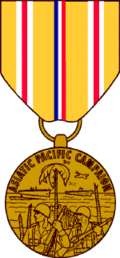
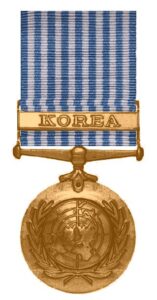



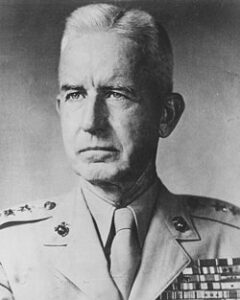









Leave a Reply